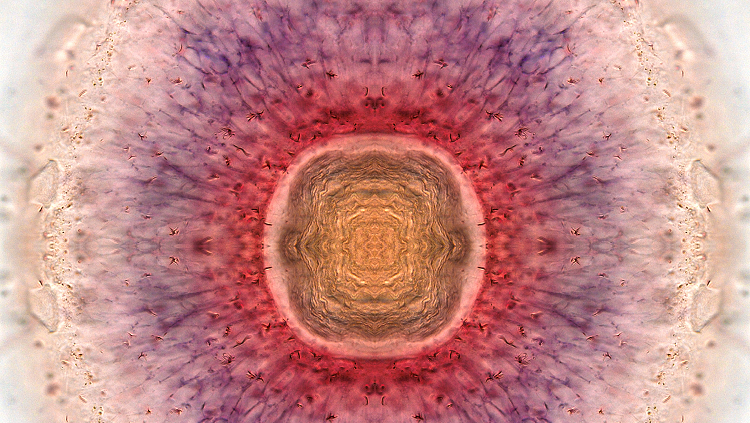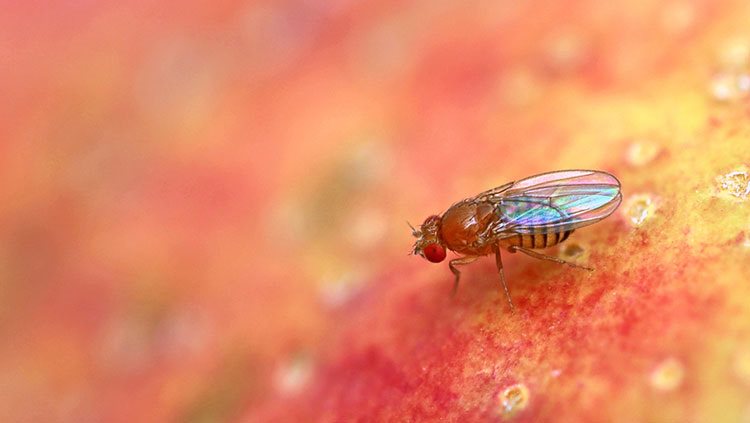Zebrafish Eyeball Stays Flexible for the Future
- Published22 Oct 2019
- Author
- Source BrainFacts/SfN
The visual information you have about the world has passed through your eyes. There, retinal neurons turn light into electric signals for your brain to assemble into the images you see. The retina pulls off this conversion with the help of a handful of different neuron types. They form chains that relay the signal to the back of the eye and beyond.
But the retina starts off with only one sort of cell, a stem cell, seen here in the red inner ring of this three-day-old zebrafish. As it grows, some stem cells grow into specific retinal neurons, which appear purple here. Now, fish, birds, and amphibians are lucky, because their eyes stash away some of these flexible stem cells — which can be used to repair injuries — for later. We mammals, however, are stuck with the retinal neurons we have, so any damage tends to be permanent. Researchers hope to change that, however, by developing stem cells for transplant that make our eyes as resilient as fish eyes.
CONTENT PROVIDED BY
BrainFacts/SfN
References
Centanin, L., & Wittbrodt, J. (2014). Retinal neurogenesis. Development, 141(2), 241. doi: 10.1242/dev.083642
Oswald, J., & Baranov, P. (2018). Regenerative medicine in the retina: From stem cells to cell replacement therapy. Therapeutic Advances in Ophthalmology, 10, 2515841418774433. doi: 10.1177/2515841418774433


















